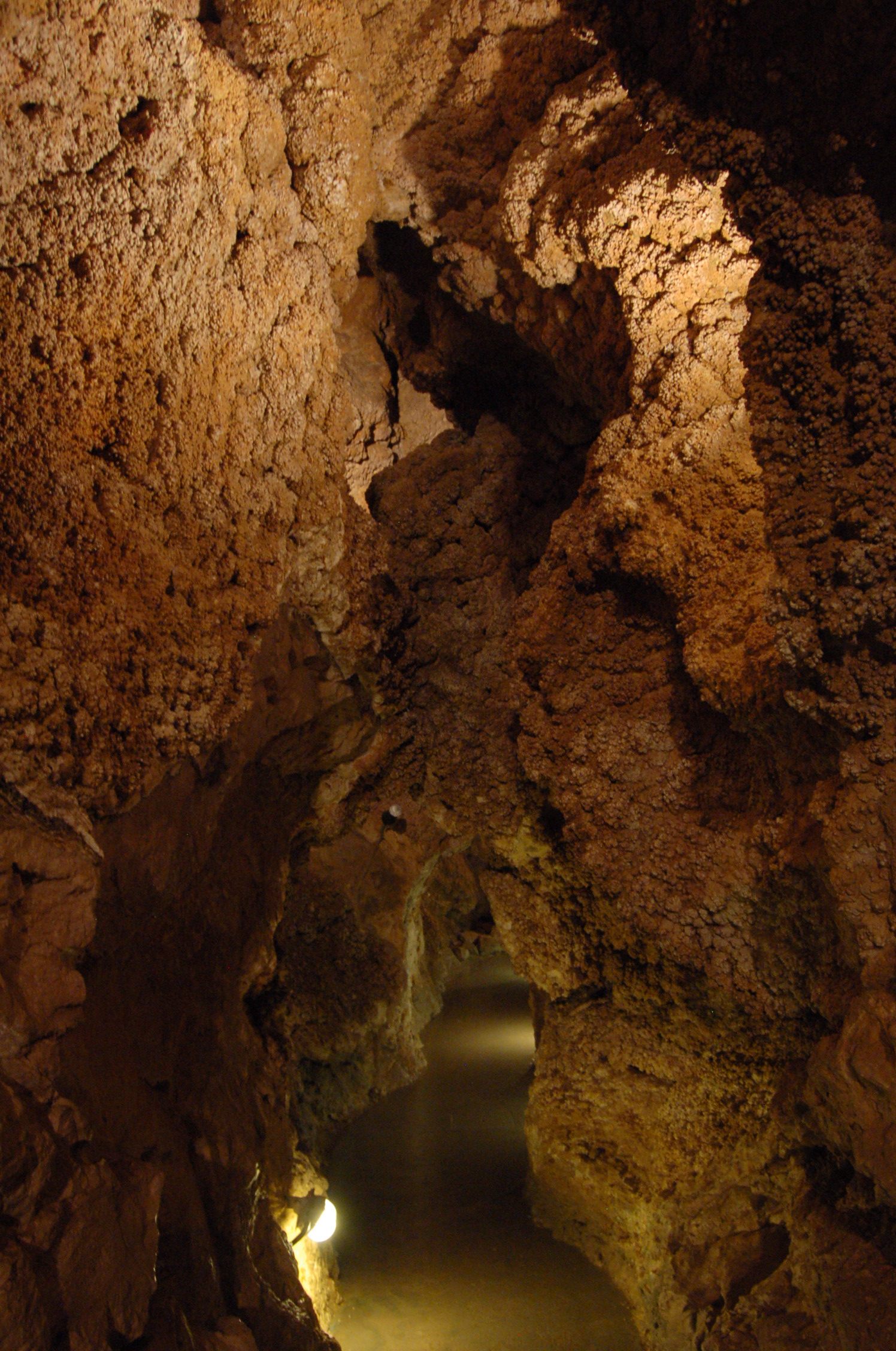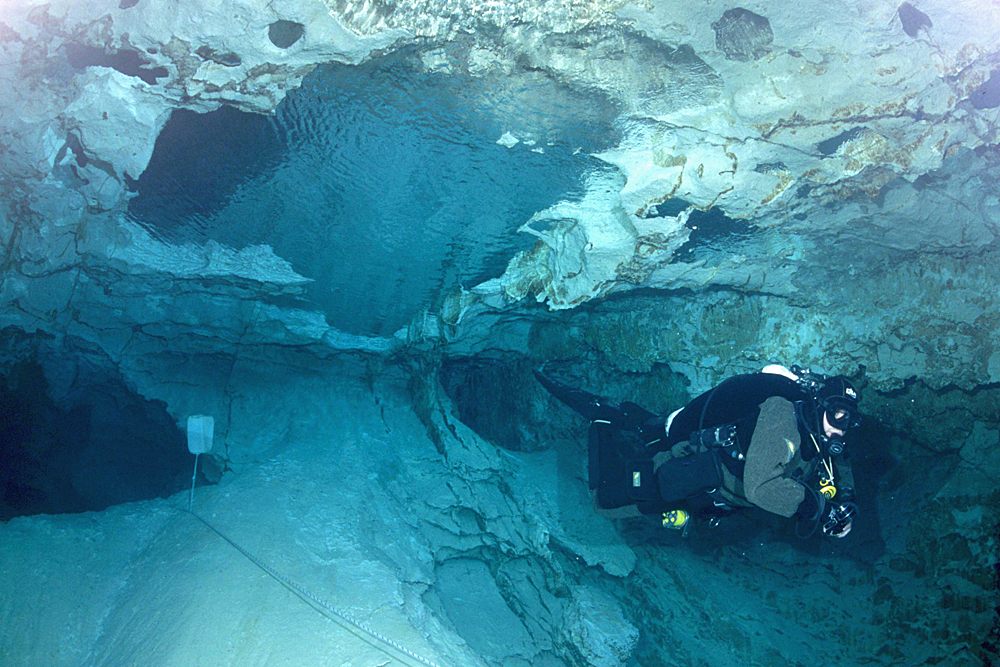The Labyrinthine ‘Underground Flower Garden’ Caves Beneath Budapest

The caverns and chambers of the Molnár János cave are large, larger than inactive caves in Budapest and are still being formed. (Photo: Laszlo Abel)
Beneath the city of Budapest lies a hidden subterranean world that reveals an unknown chapter of the city’s famous spa culture. With over 80 geothermal springs and around 200 caves found to date, the Hungarian capital is home to the world’s largest known thermal cave system. While most are familiar with the city’s steaming thermal baths, some of which date back as far as the Ottoman occupation in the 15th century, the source of Budapest’s thermal waters is a curiosity in itself.
Budapest is split into two parts by the Danube River: Pest, the main economic and cultural hub lies on a flat plane, and mostly residential Buda is defined by hilly territory dotted with elegant villas. You’ll find the famous Buda Castle and most of the city’s thermal baths on the curvier banks of the river, but you’ll also find adventure and mystery below, in a complex labyrinth of caves that wind underneath the houses and streets of Buda, including the world’s largest underwater thermal water cave, the Molnár János Cave, whose curative water is still pumped into the popular Lukács Baths.
Budapest lies on a geological fault line, where the ascending thermal water dissolved many cave passages close to the surface. Because these caves were carved out from the inside from water coming from below, they did not have any natural entrance to the surface, so most of the caves lay hidden until the early 20th century, when they were uncovered due to quarrying or drainage groundwork that took place in the hills.

Szemlohegy caves. (Photo: Livia Novak)
Pál-völgy was the first cave system to be accidentally discovered in the residential part of the Buda Hills, but it was the Szemlő-hegy caves, located 800 meters away, that revealed the mysterious origins of these caves. Today, parts of both caves can be entered and explored.
Uncovered in 1930, the Szemlő-hegy caves are around 2,200 meters long. The temperature drops to 46° Fahrenheit as you walk down the artificial, paved tunnel into the cave. Inside, the network of water-carved tunnels curve into bends with striking, pinkish mineral formations decorating the walls. Some of the shapes lie in undulating layers, others resemble small cauliflower heads, while some of the mineral deposits mimic flowers, which earned the cave its nickname the “Underground Flower Garden.”
Above and across, chambers open up to other passages and caverns, all adorned with mineral ornamentation. There are little to no stalagmites or stalactites, in fact all the features making up this floral tapestry of minerals can be attributed to the cave’s thermal water origins.

Mineral deposits in Szemlohegy caves. (Photo: Livia Novak)
As the city expanded, more cave systems were uncovered in turn. Ferenc-hegy was discovered during drainage groundwork, then the extensive Mátyás-hegy cave network, which can be visited even by amateur spelunkers in the company of a guide, and finally József-hegy, a cave which has the richest mineral formation in all the Buda caves and is open only to researchers.
There is one cave that is not like the others: the submerged Molnár János cave, which an active thermal water cave located only meters from the Danube river bank.
If you walk past the Lukács Baths, stop and look across the road. There is a small lake set next to a ruined bath covered with a dome cupola, with birds flying in and out of its abandoned windows. Despite its Ottoman appearance, this forgotten bath dates back to the 19th century and was the first building that used concrete in Hungary, but the real mystery lies underneath its lake.

Above ground at Malom Lake. (Photo: Jennifer Walker)
The algae-covered pond called Malom Lake marks the source of a thermal water spring that has been known for its thermal and curative properties ever since the Romans. Under the pond, Roman construction testifies to the city’s bath culture going back centuries, but divers were more interested in the underwater cave that lay beyond the entrance of the spring.
In 1974, the divers explored and charted this submerged cave, which measured around 400 meters in the initial investigations. But there was more to it than met the eye. While the water’s temperature was a pleasant 68º Fahrenheit, divers noticed the wall of the cave was also warm. However, it was not until the early 2000s that further exploration began and a whole new cave system was uncovered after divers drilled through the wall and saw the cave continued beyond that initial chamber.
Cave diver Zsolt Szilágyi dived the cave over 300 times as an explorer and as a dive guide, and worked with some of the exploration teams in uncovering the cave. “It was difficult to investigate the cave further since the nearby Lukács Bath gets the water from this cave. There was a pipe that ran into that cave at the time, and we were not allowed to disturb the water too much, because, otherwise the silty water could contaminate the bath,” he says.

The Molnár János cave is only accessible to qualified cave divers. (Photo: Laszlo Abel)
Szilágyi continues, “However, in the early 2000s, they moved the pipe to another location, so divers could investigate and found that the cave system continues beyond the first chamber, this marked the start of the new exploration. Until 2011, we found the cave system was around seven kilometers long.”
The Molnár János cave is not only still active as a thermal water cave, but it’s still being formed. The water in the cave is an acidic cocktail of sulphuric acid and carbonic acid, which come from the thermal springs carrying up hydrogen sulphide and the high concentration of carbon dioxide which dissolve in the water. This corrodes the walls of the limestone cave, not only carving out the cave itself, but also leaves a silty deposit on the walls. This makes exploration difficult, since the disturbed silt alters the visibility of the cave and contaminates the water.
“When exploring the cave, our main issue was the visibility, since time is very short and sometimes here in the Molnár we had to take a mental picture of the wall we were working on and then drill - because the visibility gets bad,” says Szilágyi.

The thermal water from the Molnár János is used in the nearby Lukács Baths. There water was once delivered to the baths via a pipe, although the baths also have their own springs delivering the thermal water. (Photo: Laszlo Abel)
The exploration revealed a complex network of large caverns, narrow channels, underwater lakes and walls featuring mineral deposits.
The explorations and dives stopped in 2011, after the tragic death of a diver. Even though the cause of death occurred due to unrelated health reasons, the caves was closed for all visitors until fall of 2015. Soon qualified cave divers will be able to visit the cave again.
If you’re interested in the cave, but you’re not a qualified cave diver, you can get an impression by visiting the Szemlő-hegy show cave or by suiting up with a helmet and a guide to explore a part of the extensive Mátyás-hegy system.
“Molnár János is similar to Szemlőhegy,” says Szilágyi, “but the Molnár János is ten times bigger. I would say it’s very similar to Mátyás-hegy too, but in much bigger in proportions. The caverns and tunnels are much larger and wider, but the caves are very similar.”

The Molnár János cave was once accessible only via the source of the water at Malom Lake, but since another artificial entrance has been created to make life easier for divers and explorers. (Photo: Laszlo Abel)
The only way into Mátyás-hegy requires a scary 10-meter vertical descent down metal ladder. Inside though, the headlamp reveals a labyrinth in patches that goes off in multiple directions. Some places require you to slide down shafts, or crawl along narrow corridors and squeeze through tight walls that appear to move in waves. At the lowest point of the caves open to amateur spelunkers, getting back up requires a spot of rock climbing up a vertical wall in one of the chambers, but shining a light through the passage above make you feel like you’re trapped in a rock-carved anthill in places. At this point, imagining the chamber to be submerged in water at a bigger scale is daunting to the uninitiated.
“The Molnár János cave is like a swiss cheese, the Matyás-hegy caves too, and after diving 50 to 60 caves, I have only ever seen these caves with this kind of structure,” adds Szilágyi.
After hours of being underground, the feeling of inhaling fresh air is welcome when I finally emerge. But deep under the city, the traffic from the surface is silenced. Wandering Budapest’s streets it’s difficult to imagine that under the city and its spas there is an extensive network of caves as well as underwater complexes that go unnoticed by locals on a daily basis. Budapest’s caves still carry many secrets, and who knows how many more caves, chambers and caverns lie undiscovered under the Hungarian capital.













Follow us on Twitter to get the latest on the world's hidden wonders.
Like us on Facebook to get the latest on the world's hidden wonders.
Follow us on Twitter Like us on Facebook